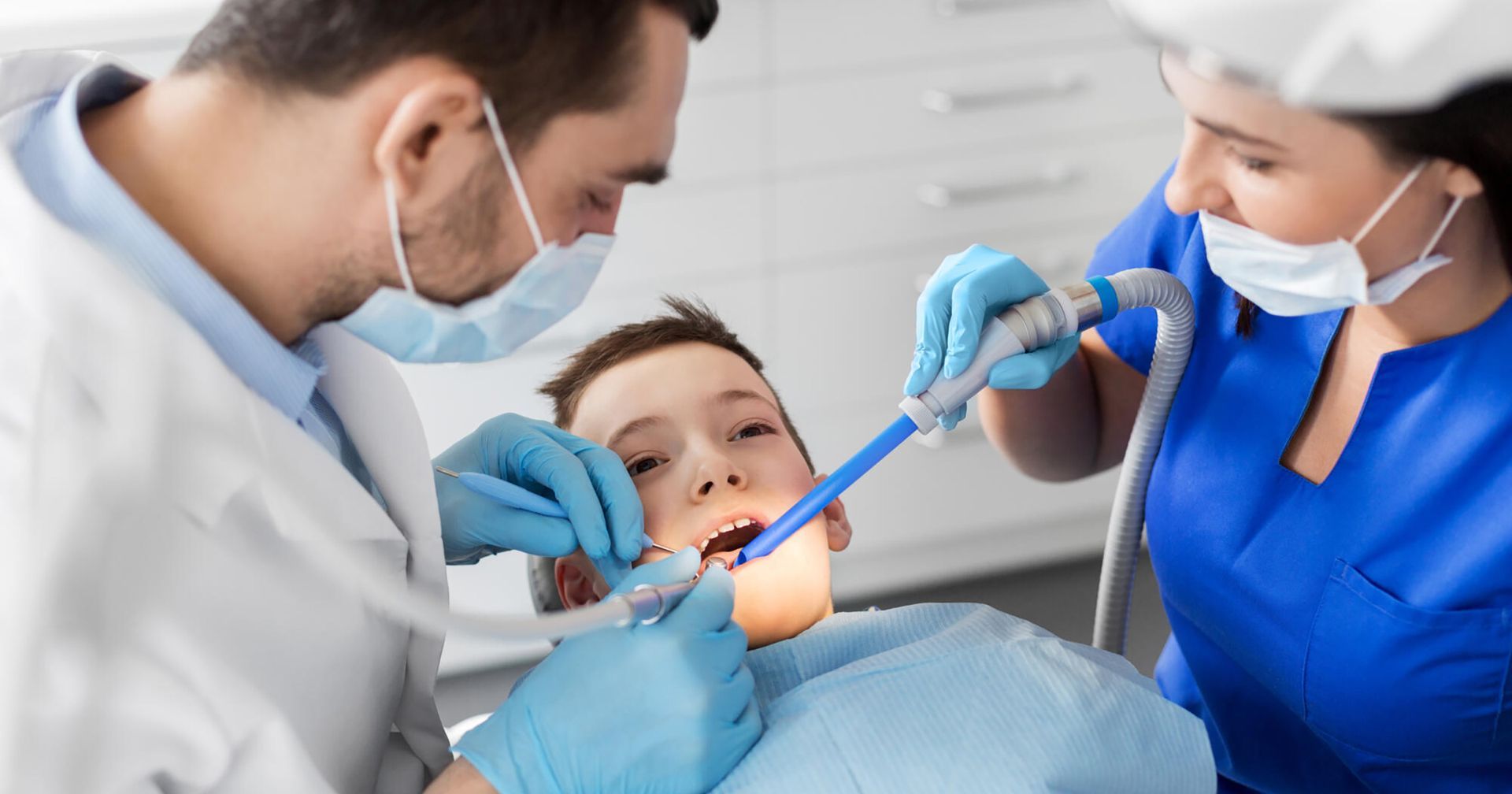Reasons for Pediatric Tooth Extractions
Discover why pediatric tooth extractions are recommended and stay informed as a parent. Learn about oral health factors and when to consult a dentist today!
Parents often feel a bit uneasy with pediatric tooth extractions, yet these procedures resolve serious problems and keep your child's mouth healthy.
They tackle common dental issues in kids, from severe tooth decay in children to injuries that can't be fixed any other way, all while supporting long-term kids' dental health. Rest assured, extractions happen only when needed, and they pave the way for a brighter, pain-free smile.
The National Institute of Dental and Craniofacial Research reports that 23% of children ages 2 to 5 have dealt with dental caries in their baby teeth.
Numbers like that really drive home the importance of baby teeth. Without them in good shape, simple things like enjoying a snack or chatting with friends can turn tough.
Plus, untreated issues might lead to infections or alignment woes later on.
That's why spotting trouble early matters so much. If you notice:
- Swelling
- Persistent pain
- Dark spots on teeth
It's a signal to visit a pediatric dentist pronto. We see families every day facing these concerns, and a quick check can often prevent the need for more involved care.
At Dental Studio 4KIDS, our board-certified pediatric dentist, Dr. Denisse Lasanta, brings years of expertise from her residency in Tampa and a heartfelt approach.
When Severe Decay Makes Extraction Necessary
Severe decay tops the list in reasons for pediatric tooth extractions, and it's something we see all too often in our practice. Tooth decay in children starts small, a little spot from too much sugar or skipped brushing, but it can snowball into a big problem if not caught early.
We're talking about cavities that dig deep into the tooth, damaging the pulp inside and causing real pain or swelling. At that point, a filling just won't cut it, and pulling the tooth becomes the best way to stop the pain and prevent things from getting worse.
Baby teeth might seem temporary, but their importance can't be overstated. They help with:
- Chewing
- Speech
- Holding space for adult teeth to come in properly
Lose one too soon without a plan, and you could end up with shifting teeth or bite problems down the line.
Fluoride toothpaste and sealants can work wonders against tooth decay in children. But if decay has gone too far, extraction keeps the infection from spreading to nearby teeth or even the jawbone. We use gentle techniques, like our Solea laser, to make the process quick and comfy, often without the need for drills that scare kids.
How Old Can a Child Be to Have a Tooth Extraction?
Extractions aren't age-specific; they depend on the situation. We've handled them for toddlers as young as 1 if a tooth is badly decayed or injured, right up to teens around 18, when permanent teeth might need removal for orthodontic reasons.
Guidelines from the American Academy of Pediatric Dentistry emphasize that we only go this route when other fixes, like crowns or pulpotomies, won't work. For the youngest kids, it's often about stopping pain fast, while older ones might need it to align their smile.
Handling Dental Injuries That Lead to Pulling Teeth
Kids are bundles of energy, zipping around playgrounds or sports fields, and that's when accidents happen. A fall off the bike or a stray ball to the face can crack, chip, or knock out a tooth, leading to pediatric tooth extractions if the damage is beyond repair.
Trauma like this is another big reason we perform these procedures, and it ties right into common dental issues in kids who are active and exploring.
Studies from BMC Oral Health by Laforgia et al show that about 15% of preschoolers and 20-25% of school-age children have faced dental trauma at some point. Globally, the prevalence hovers around 20-30% for young ones, with boys often edging out girls due to rougher play.
These injuries can shatter the tooth's structure or loosen it from the socket, making saving it tough. If the root is involved or there's nerve damage, extraction prevents ongoing pain or infection.
We always start with a thorough check. X-rays help us see the full picture. Sometimes, we can splint the tooth or use bonding, but if it's wobbly and risking nearby teeth, removal is safer.
Extractions for Crowded Mouths and Braces Prep
Not all pediatric tooth extractions stem from problems; some are strategic, like when mouths get too crowded.
Baby teeth sometimes linger longer than they should, blocking permanent ones from erupting straight. Or, the jaw might be on the smaller side, leading to overlap and misalignment. In these cases, pulling a few creates space, setting the stage for braces or natural alignment.
This approach is common around ages 7 to 12, when mixed dentition, baby and adult teeth together, happens. The AAPD notes that if teeth won't respond to orthodontic forces, surgical extraction is preferred to guide proper growth.
Dealing With Infections That Require Tooth Removal
Infections sneak up fast, often from untreated decay or trauma, turning into abscesses with pus and swelling. These can throb with pain and even cause fever if they spread. When antibiotics and root treatments fall short, extraction becomes essential to halt the infection and safeguard the child's health.
This scenario is a classic common dental issue in kids, especially if baby teeth have deep cavities, letting bacteria in. Untreated, it risks nearby teeth or systemic issues, which is why we act decisively. The CDC warns that ignored cavities lead to infections, disrupting daily life, like eating or sleeping.
We focus on comfort, using local anesthesia and our laser for precise, less invasive removals. Post-care involves antibiotics if needed, but most kids bounce back quickly.
How Long Does It Take for a Child to Recover from a Tooth Extraction?
Recovery varies, but for simple baby tooth pulls, kids often feel fine in 1-2 days, with full healing in a week. Surgical ones might take 7-10 days for basics and up to three weeks overall.
Swelling peaks in the first day, easing with ice and rest.
Stick to soft foods, no straws to avoid dry socket, and give pain relief like ibuprofen for 3 days if sore. Watch for excessive bleeding; a bit is normal, but call us if it persists.
FAQs
Is Tooth Extraction Painful for Kids?
Many parents ask us this, and the short answer is no. Modern techniques keep things comfortable.
We start by numbing the area with local anesthesia, so your child feels only pressure, not pain, during the pull. For extra calm, options like nitrous oxide or oral sedation help relax nervous kids without any pain.
Our Solea laser adds precision, often skipping traditional tools for even less sensation. Afterward, a bit of soreness might show up as numbness fades, but over-the-counter meds like children's ibuprofen handle it well, fading in a day or two.
Every kid's tolerance varies, so we chat about their needs upfront to tailor the approach.
What Happens During a Pediatric Tooth Extraction?
We keep it straightforward and quick, usually 20-40 minutes per tooth. First, we numb the spot with an anesthetic. Your child might feel a quick pinch, but then it's all pressure-free.
Using an elevator tool, we gently loosen the tooth from its socket, then use forceps to remove it smoothly. If it's a tougher case, like an impacted tooth, we might use sedation for relaxation.
Right after, we place gauze to form a protective clot and stop bleeding. We explain each part as we go, with distractions like stories or toys to keep things light and fun.
How Can I Get My Child Ready for an Extraction?
Start by chatting openly in simple terms. Explain it's like helping a wiggly tooth say goodbye to make room for a healthy smile. Role-play with a stuffed animal or share positive vibes about post-treat rewards, like ice cream or extra playtime.
Bring a comfort item to the visit, and stay upbeat yourself; kids pick up on your calm energy.
Avoid scary words and frame it as an adventure. We suggest no pain meds before, as they can affect clotting, but have them ready for after.
What Are the Signs That My Child Might Need a Tooth Extraction?
Look out for ongoing pain that doesn't quit, even with meds, or swelling around the gums that looks puffy and red.
A bad taste in the mouth or fever could signal an infection brewing, while loose teeth that shouldn't be wiggly yet, especially with dark spots, might mean decay's taken hold. If your kid avoids chewing on one side or complains during meals, that's a red flag, too.
Making Sense of Pediatric Tooth Extractions
We've covered a lot of ground on pediatric tooth extractions. These procedures step in when other fixes fall short, always aiming to shield your child's growing smile and dodge bigger headaches later.
At Dental Studio 4KIDS, Dr. Denisse Lasanta, our board-certified professional and Diplomate of the American Board of Pediatric Dentistry, delivers top-notch care using the Solea laser for virtually pain-free visits that kids actually look forward to. We specialize in gentle handling for special needs little ones and offer bilingual support in English and Spanish to make everyone feel at home.
If you're in Lutz, FL, or the Tampa area hunting for a trusted spot, we're here to help. Call us at 813-807-3201 today, and let's
schedule that appointment.












